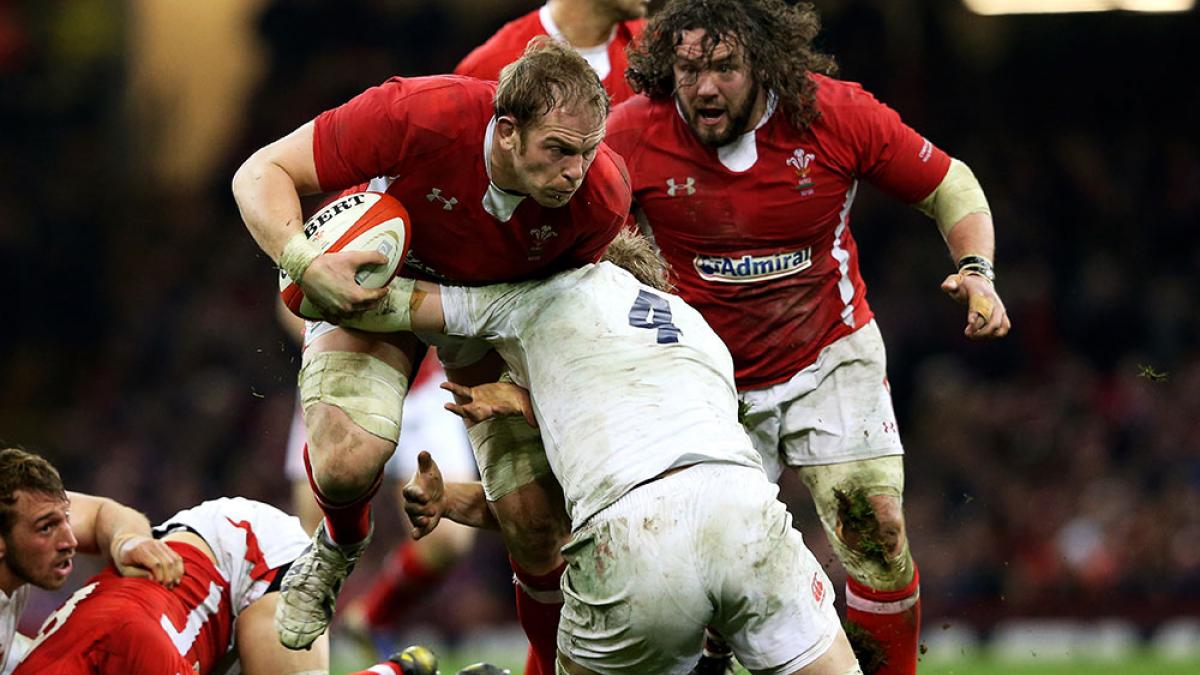Former Saracens physiotherapist James Moore shares his top five tips for staying safe.
On this page:

Physios are a matchday presence who also use expertise during rehabilitation and to minimise the risks of injury in the first place. Due to the highly physical nature of the game physiotherapists are involved at all levels from international teams down to the grassroots.
Their role is not only a matchday presence. They also use their highly-developed expertise during the rehabilitation phase and to minimise the risks of injury in the first place, including knowledge about how to incorporate sports-specific skills into a player's rehabilitation.
This could mean getting a scrum half doing effective box-kicking following a hip and groin injury, a member of the back three being able to sprint effectively again after a hamstring injury, or a prop returning to scrummaging from a shoulder or spinal injury.
Functional demand and the risk of injury
Physiotherapists are also best placed to understand the functional demands of the sport and to analyse each individual for potential areas of risk.
They will do this by taking a detailed history of all previous injures and understand any present complaints no matter how minor.
They can assess posture and biomechanics as well as movement mechanics to look at how all the joints work together in unison.
They can perform tests to asses individual joints, muscles, tendons, ligaments and the functionality of the nervous system.
James Moore's five tips for minimising risk

Former Saracens physiotherapist James Moore is now intensive rehabilitation unit manager at the British Olympic Association.
He has worked on the Winter Olympics in Sochi, and the Summer Olympics in Rio de Janeiro.
Here he outlines the ways in which players at every level can minimise their risks of being injured this season.
1. Knees - train your hamstrings
Knee injuries have been shown to result in the largest amount of time lost from sport. It can take up to nine months to return to sport after an anterior cruciate ligament (ACL) injury, for example.
The hamstrings have been shown to be the region most frequently injured by the outside backs (full backs and wings) and the most common injury to occur away from contact.
The hamstring works effectively well with the knee in that it supports the ACL by controlling the shin. But while the hamstring can support the knee well the knee also needs to be able to produce huge forces and in particular large amounts of deceleration forces especially when changing direction.
Hamstring injuries predominantly occur during high speed running which is why the back three are most vulnerable.
Eccentric exercise
Effective eccentric exercise training (slow and controlled) will help with deceleration movements and effective high-speed training will help to minimise hamstring injuries.
Examples of this include any form of pressing movements such as leg presses, squats and deadlifts but done under control and tension through the lowering phase (i.e. lowering slowly).
Train your hamstrings with both complex movements (split squats and lunges) as well as isolated movements (hamstring curls).
Strength training in the gym alone will not protect your knees - the hamstrings need to be trained at speed, so effective drills and running sessions will help to condition your hamstrings. Practising cutting movements and decelerations can condition your knees.
2. Shoulders - effective lats function
The latissimus dorsi ('lat') is the main muscle that produces shoulder extension and has been shown to be vital in stabilising the shoulder during a rugby tackle.
It also helps with any pulling movements during the sport such as reaching and grabbing an opposition player, being over the top of the ball in the tackle position or aiding a prop while scrummaging to help to out-manoeuvre his opposite number.
The shoulder has been shown to be the second most common injury resulting in significant time lost.
The lats can be effectively trained with movements such as pull ups and deadlifts, but pure strength and power are not the only requirement.
Mobility and control
Allowing for mobility and control through range is also key so training the lats with moves such as hanging leg raises and over-head squats can also increase function.
Maintaining flexibility of the shoulder is also key in not allowing the lats to become over-active. So while we advocate training them this does not and should not occur at the expense of training any of the other muscles in the shoulder complex both for strength and control.
Finally the lats have been shown to work with your thoracolumbar fascia (in essence the elastic tissue in your low back) to help support your spine and pelvis. Coupled with this they work well with your opposite hip to aid in hip extension when running.
So effective lats can support your shoulder, your spine and help with running mechanics.
3. Ankles and calves - join a 'baby cow' club
Calf injuries have been shown to be the most frequent injury experienced by the front row.
While simple ankle sprains and minor calf strains do not result in a large amount of time lost per injury they can occur regularly so when added up through a season their cumulative effect of time lost is significant.
The surface that rugby is played on can vary from day to day and week to week and this means that your feet and ankles need to adapt constantly and at the same time produce force.
Proprioceptive exercise
Running alone does not condition the ankles, feet and calves well enough to deal with the demands of the surfaces and the sport.
Effective strategies include strength training through calf raises, calf and ankle mobility through range by working uphill and by maintaining good ankle and calf flexibility (through regular stretching) and working on reactivity through proprioceptive exercises such as single leg balance work.
4. Spine - train your neck muscles and maintain hip mobility
Spinal injures - ranging from simple sprains to catastrophic injuries involving spinal fractures - are becoming more common in rugby.
There is an increased use of the head and neck being used as a lever arm to help with 'clearing out'.
Therefore training your neck muscles by maintaining neck flexibility drills and by building the muscles around the neck can help.
Simple shrugs
Exercises that can help include simple shrugs. There are much more complex exercises but we would advise you to seek specialist input before commencing as the neck is a very sensitive and vulnerable area.
Equally the low back can be very vulnerable. When you go back to basics the spine is really a large spring that is designed to transfer force around the body. It is not designed to be the primary force producer.
This primary force production should come from the shoulders and hips so effective mobility and flexibility for both your hips and shoulders, coupled with good strength through your available range of motion, can take a lot of pressure off your spine and therefore can protect it.
5. Playing and training - nutrition and recovery
Even though this aspect is last on the list it is possibly the most important.
While training during the week can help your performance at the weekend you should monitor the cumulative effect this has as it builds week on week.
The most important part of training is recovery to allow your muscles to adapt and recover effectively.
Rugby is a high velocity collision sport that traumatises the muscles and joints with impact. This too needs effective recovery to allow the body to be ready for the next session and insult.
Monitoring your nutrition, sleep and the amount of work you have done is key to achieving the right physiological state so that you are ready to play at the weekend.
Nutrition and risk of injury
If you turn up to a game fatigued and not completely recovered your risk of injury goes up significantly.
Watch your diet and make sure it is balanced with appropriate amounts of protein, carbohydrates, fats and importantly vegetables that can all help the muscles to rejuvenate.
Schedule in regular breaks where you reduce your rugby training, reduce your 'on-feet' training (running), and reduce your weight training.
This does not need to be done at the same time in the same week but cycling the reduction in load through one of these three mediums can be key to making sure that you are not over-cooking it for the weekend.